Arg-e Bam: The Fascinating Citadel of Ancient Persia
Rising like a Phoenix from the ashes of the devastating 2003 Bam Earthquake, Arg-e Bam, also known as the Bam Citadel, is a magnificent ancient mud city and the largest adobe structure on earth.
Located in southeast Iran at the edge of the Lut Desert in Kerman Province, this UNESCO World Heritage Site traces its roots back to the Achaemenid Empire (6th to 4th centuries BC). It was a center of power, trade, and culture from the 7th to 11th centuries when it was a vital landmark on the Silk Roads and was known for its silk and cotton garments.
Today, Bam is the "most quake-proof city in Iran" and a must-visit destination on any trip to Iran. In this blog, we'll explore the history and significance of this remarkable town and take a closer look at its stunning architecture and design.
Arg-e Bam History
Arg-e Bam has sparked controversy over its origins. However, it is believed that Achaemenians built it in 579-323 BC. During the Parthian era, the fort was expanded and became the Citadel of Bam, with the essential core of the city built during this time. Under Sassanids, the castle was seized, and new fortifications and walls were constructed.
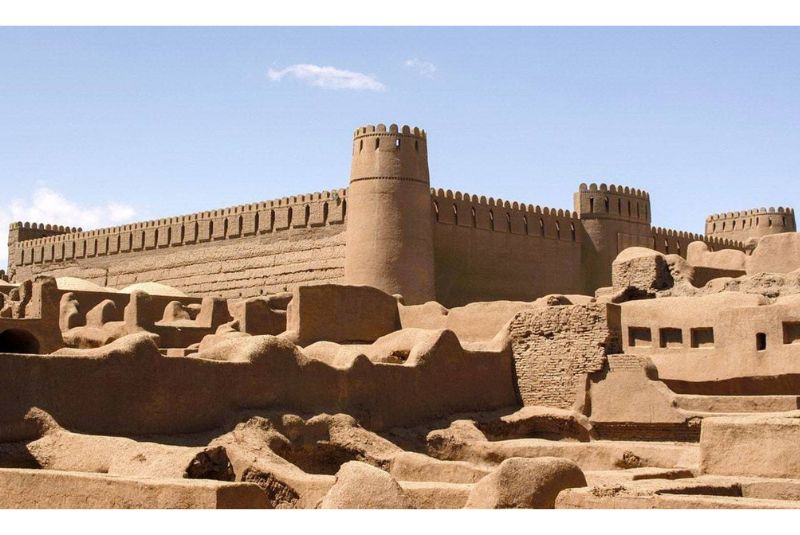
The Citadel's military importance continued through the Islamic era, where it became a permanent base camp for various rulers and was strategically located on the spice route connecting the region to the Silk Road.
Despite enduring damages during wars, Arg-e Bam remained a well-established market known for its elegant cotton fabrics, massive castles, crowded bazaars, and palm trees. The Safavid dynasty saw the Citadel's expansion and the construction of palaces such as the Four Seasons Palace. However, one of the most tragic events in history happened when Agha Mohammad Khan Qajar killed six hundred captives in the city, sending their heads to Bam as a threat to Lotfali Khan Zand.
Today, Arg-e Bam stands as a significant cultural heritage site, with conservation and restoration efforts ongoing since 1953. The 2003 earthquake destroyed almost 80% of the Citadel, but many countries, including Japan, France, and Italy, supported Iran in rebuilding the site.
| Suggestion: Iran UNESCO World Heritage Sites
Origin of the Citadel's name
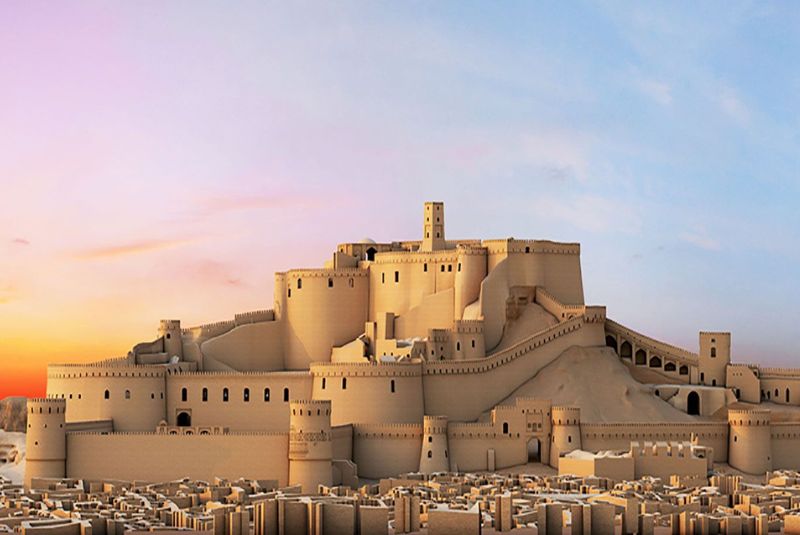
Bam got its name from the legendary story of the conquest of King Ardashir, the first Sassanid king (242-224 AD). According to Ferdowsi, the author of Shahname, a king named Haftvad (seven boys) ruled a vast region from the China Sea to Kerman but was poor. He had seven sons and a daughter who saved a worm found in her apple, bringing them unimaginable luck. Haftvad became so rich and powerful that no one could resist him. However, when King Ardashir heard of his power, he fought him and emerged victorious, taking over his kingdom. As the invading conqueror stormed the castle, he pierced the worm with a metal rod, causing it to burst and giving the place its name, Bam (meaning burst).
Arg-e Bam As A Trading Center on the Silk Road
Silk Road was like a spider web, with countless branches that crossed many cities. Merchants and caravans traveled along this route, transporting exotic goods from China, Central Asian countries, Iran, and Europe. The Silk Road stretched from China all the way to the heart of Europe, making it one of the most significant trading routes in the world.
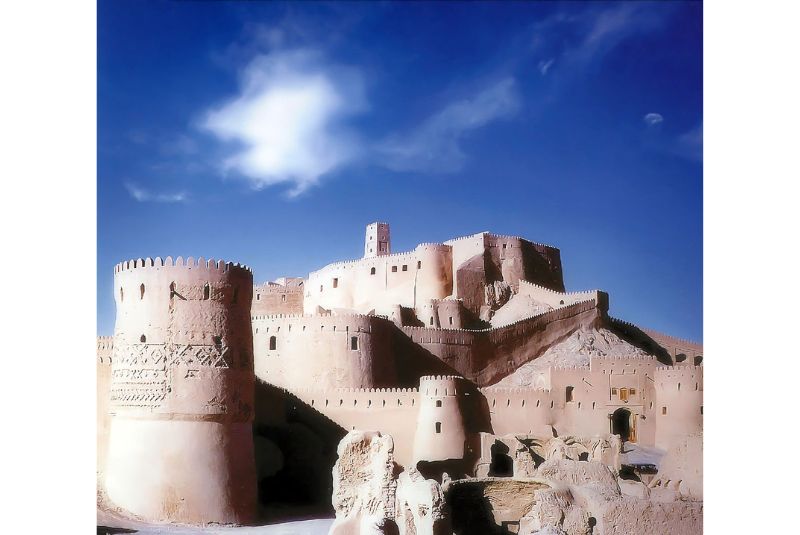
Arg-e Bam was one of the most important stops along this ancient trade route for caravans and traders on their long journeys, and it played a key role in the exchange of goods and ideas between the East and the West. Thanks to the city's remarkable canals used to bring water from the surrounding mountains to the fortress, water reached the arid soil, allowing crops to flourish and people to settle in the region. As a result, Arg-e Bam became a bustling trading center, attracting merchants and traders from far and wide.
| Suggestion: Naqsh-e Rustam | Ancient Treasures & Zoroastrian Legacy
Arg-e Bam Architecture
The city of Bam is a true marvel of desert architecture with 38 watchtowers and four entrance gates, and a moat surrounds the outer defense wall. Despite the toll of time and earthquakes on many of its structures, the desert environment has created a remarkable desolate beauty that will take your breath away. What makes it so special is the local technique used in its construction, which relies on layers of mud, clay, and arched and domed structures. This technique has been used for centuries and is a perfect example of how people living in inhospitable environments can thrive.
One of the most fascinating things about Bam is how the city is divided into two distinct parts: one for the ruler and one for the ordinary people. The ruling area is built on top of a cliff and includes the royal stables, barracks, and ruling houses, while the ordinary area extends from the bottom of the ruling area to the city walls and includes everything a city needs.
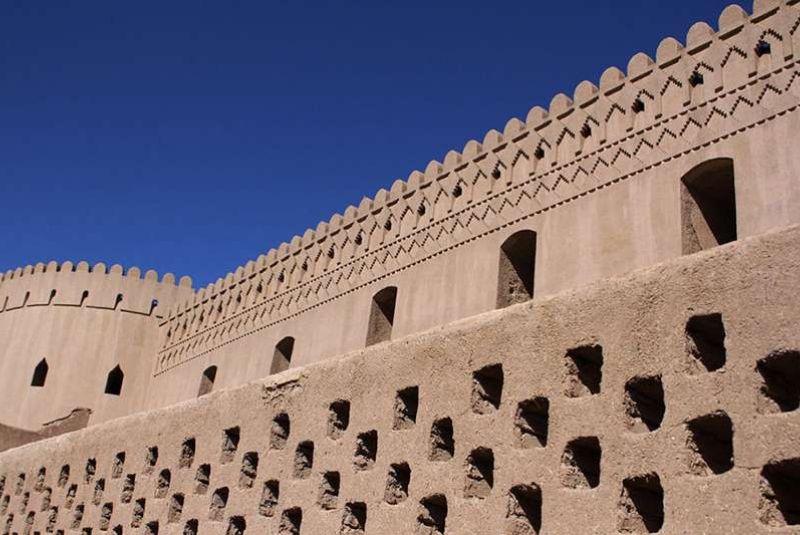
Bam Citadel – Governor's Quarter
As you enter from the main gate, you'll immediately notice the impressive military fort, four-season tower, military barracks, water wells, stables (with a capacity for 200 horses in the center), main tower, ruler's residence, bath, the residence of the barracks' director (known as a windmill), entrance gate, and fortifications. Don't miss the three-story governor's palace, where the ruler of the time reviewed and passed civil orders and decrees. The governor's quarter also includes impressive stone ramparts, about 7 meters high, providing a defense against any invaders. Explore the remains of the second gate of the Citadel in the neighborhood known as Kotekerm (worm house), a witness to the Haftvad legend from the epic book, Shahname.
Bam Citadel – Common People's Quarter
Separated from the governor's quarter by a long fence, this quarter includes the entrance, the main gate of the city, the grand mosque, Zurkhaneh, Sabats, House of Judah, Tekiyeh Square, Prophet Mosque, bath, school or Khaneghah, stables, Mirakhor building, and residential neighborhoods with about 400 houses. Explore the different architectural styles of the houses, including small houses for the poor, larger houses with porches for the middle class, and luxurious houses with large courtyards and stables for animals. Don't miss the House of Sistanis and the House of Jews, two examples of such luxurious houses.
Don't miss the wonder of the wind towers featured in the luxurious houses, with each building having a tower to conduct wind from various directions and a small pond used to reduce the temperature and eliminate desert dust inside the building.
Arg-e Bam Highlights
Here are some of the most important highlights of the ancient city of Bam that you won't want to miss:

The Bam Citadel
At the heart of Arg-e Bam is the magnificent Citadel, a massive structure that served as a defensive fortification and the governor's headquarters. With walls seven meters high and 1815 meters long, it's an awe-inspiring sight that will leave you feeling humbled by the ingenuity of ancient Persia.
The Bazaar
No visit to Arg-e Bam would be complete without exploring the traditional indoor bazaar, which was once a major economic gateway in the city. Here you can see remnants of the past, imagine the bustling marketplaces filled with the colors and scents of silk and cotton, and shop for unique souvenirs to take home.
The Four Seasons Palace
One of the most stunning buildings in Arg-e Bam is the Four Seasons Palace, a beautiful structure that was built during the Safavid dynasty. With its intricate designs and stunning architecture, it's a true masterpiece of Persian art and a must-see for anyone interested in history and culture.

The Bam Barracks
Used by the government militia since the early Islamic period, the Bam Barracks offers a fascinating glimpse into the military history of the region. But what really sets them apart is their unique acoustic characteristics - be sure to experiment with the courtyards to hear them for yourself!
Tekiyeh Square
The central square of Bam Citadel is a sight to behold, surrounded by photogenic cambers that are perfect for snapping some incredible photos. In the past, it was used for religious and public ceremonies, and it's easy to imagine the bustling marketplaces and colorful processions that once filled this space.
Mirza Naeem School
The Mirza Naeem School is a stunning example of Qajar-era architecture, with a unique design that's sure to impress visitors. Divided into two parts - an internal space for teachers and an external space for students - it's a beautiful, functional, and aesthetically pleasing building.
But the Mirza Naeem School isn't just a pretty face - it's also an important piece of Iran's cultural heritage. In recognition of its significance, it was registered as a national monument on August 17, 2003, ensuring that it will be preserved for future generations to enjoy.
Zurkhaneh
Did you know that the sport of Zurkhaneh has a rich history in Bam, dating back an incredible 4000 years? In fact, the old Zurkhaneh of Bam is one of the oldest Zurkhanehs in the world and a true testament to the enduring power of this ancient sport.
One of the most fascinating things about Zurkhaneh is its emphasis on purity. In Bam Zurkhaneh, for example, athletes would use a raceway to purify themselves before entering the Zurkhaneh itself. This attention to spiritual and physical cleanliness is a hallmark of the sport and one of the things that makes it so special.

Hammams (Public Baths)
Though still in a state of disrepair, the public baths of Bam are well worth seeking out. You can still make out the separate men's and women's sections and get a sense of what they would have looked like when they were in use.
Jame Mosque of Bam
Built during the introduction of Islam to Iran, the Jame Mosque of Bam is a powerful symbol of the region's religious history. This stunning mosque is not only a marvel of architecture but also has a fascinating history. The mosque contains a well called Sahib Al-Zaman, which was believed by the inhabitants of the town to have magical powers. They believed that by lighting candles and making vows in the mosque on Mondays and Fridays, they could realize their dreams.
Other Places to Visit In Arg-e Bam
It would be a shame to go all that way and miss the Ice House, a large storehouse used to preserve ice from winter to summer. Make sure to visit the Ameri House, an aristocratic residence showcasing the glory of the Qajar period. You should also visit Dokhtar Castle, a fascinating castle built during the Sasanian period, and Mirza Ebrahim Tomb, the final resting place of a famous nobleman from the Qajar period.
Lastly, Check out Khawjeh Afagh Tomb, where a famed Iranian poet rests after a brutal murder, walk along the Bam City Wall, dating back to the introduction of Islam in Iran, and marvel at the unique Iranian Islamic architecture of Rahim Abad Koushk, which is included on the Iranian National Heritage List.
How to Get to Arg-e Bam
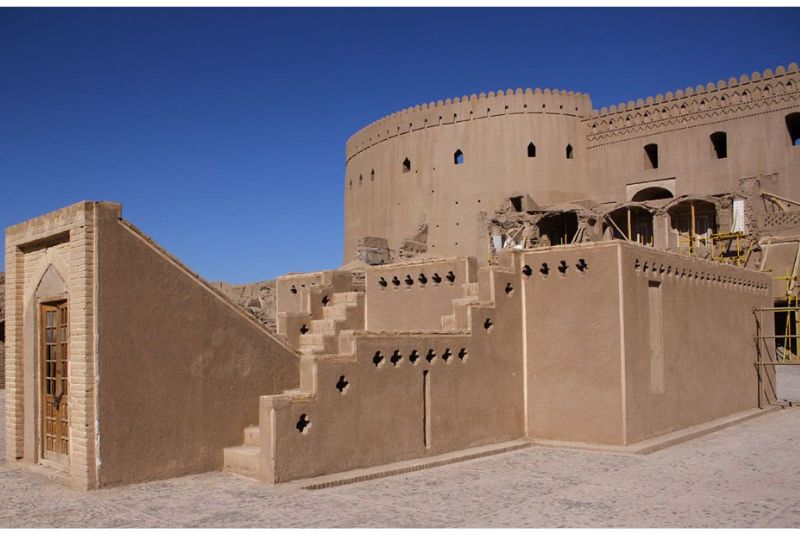
While many travelers choose to visit Bam on a return trip from Kerman, there are various ways to reach this incredible site. You can take a direct flight from Tehran or opt for a night trip on the Tehran-Kashan-Yazd-Kerman-Bam route, which continues on to Pakistan. If you're on a budget, the most cost-effective option for a day trip from Kerman is a shared taxi. While taking a bus is also an option, the expense of getting to and from drop-off points may make them less desirable.
Best Time to Visit Arg-e Bam
Given its location in the hot desert region of southeastern Iran, the ideal seasons to visit are autumn, winter, and early spring. During these seasons, the weather is cooler and more comfortable for exploring the various sections of the Citadel, including the residential zone, stables, army barracks, and governor's residence.


Comment
Leave a Comment